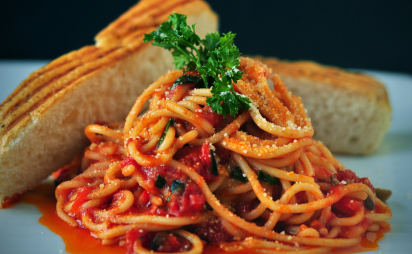Coeliac Disease or Wheat Intolerance?

Coeliac Disease vs. Wheat Intolerance
15-20% of the world population suffer symptoms including diarrhoea,
bloating, cramps, gas, and weight loss when consuming food containing
gluten such as cereals, bread, rye, cakes, beer etc. While most
get on with their lives by avoiding or reducing this type of food,
many others no matter what, complain with their doctor and are eventually
prescribed a Coeliac screen. Those screening positive may then have
a biopsy of the lining of the small intestine to confirm Coeliac
disease and only a gluten free diet will help them live a normal
life. However, statistics show that less than 1% of the world population
is diagnosed with Coeliac disease. The golden question is, 'what
is wrong with the rest who suffer so much?' There are two answers to this, one may have been wrongly diagnosed to Coeliac Disease (false negative) or otherwise a person is gluten intolerant rather than coeliac.
Avoiding a false negative result

When for several
years I worked in a London hospital screening patients for Coeliac disease
we took the utmost care to avoid false results (positive or negative).
We have controls in place to guarantee a true value. The test involves
measuring the concentration of antibodies (proteins) the person
produces against the gluten protein found in wheat. Persons who
do not suffer from Coeliac have a very low level if not zero of
this antibody value, while those who are Coeliac have a high level.
If someone who is true Coeliac has for several weeks undergone a gluten free diet before the test, his blood may not have anymore antibodies circulating. Gluten antibodies are only produced when
gluten is in the system and do not remain there for ever.
Hence, since there are no antibodies for the test to detect, the patient is diagnosed 'coeliac negative'. The person would then think all is good and after the first meal containing gluten all symptoms return. To avoid this from happening it is essential that before attending for a Coeliac screen one must for some days before the test consume some gluten food. If the person is a coeliac the immune system will produce the antibodies against the gluten protein which in turn will be detected in the test.
If this concerns children, one must first seek advice before giving them gluten food.
Wheat Intolerance

This is the other answer and is not as uncomfortable as being
diagnosed with Coeliac disease, however, the symptoms are still irritating.
It affects 15-20% of the world population, with most unaware of
the real cause of the symptoms. Wheat intolerance, also called Non
Coeliac Gluten Intolerance (NCGI) is caused when the digestive system
is unable to break down properly food containing gluten. Gluten
remains in the system which irritates the digestive system
without causing the damage that Coeliac does to the lining of the small intestine. Coeliac screen will
always result as negative because these persons do not produce antibodies.
Managing the symptoms is also easier because while Coeliac persons have to completely adapt to a gluten free diet, those with gluten intolerance need only limit the amount of gluten they consume. Not everybody is the same, some may tolerate more than others before the symptoms occur.
One must bear in mind that gluten intolerance causes irritation of the lining of the small intestine. The small intestine houses cells that produce digestive enzymes, one of them being lactase which is responsible in breaking down lactose in milk and dairy. Damage to these cells caused by this
irritation leads to reduced lactase production and hence one also becomes lactose intolerant. In fact many people who think are lactose intolerant are probably simply gluten intolerant first and lactose intolerant second. By leaving gluten out their diets or controlling its intake results in the quick recovery of these cells and will be able to consume milk and dairy without an issue.






